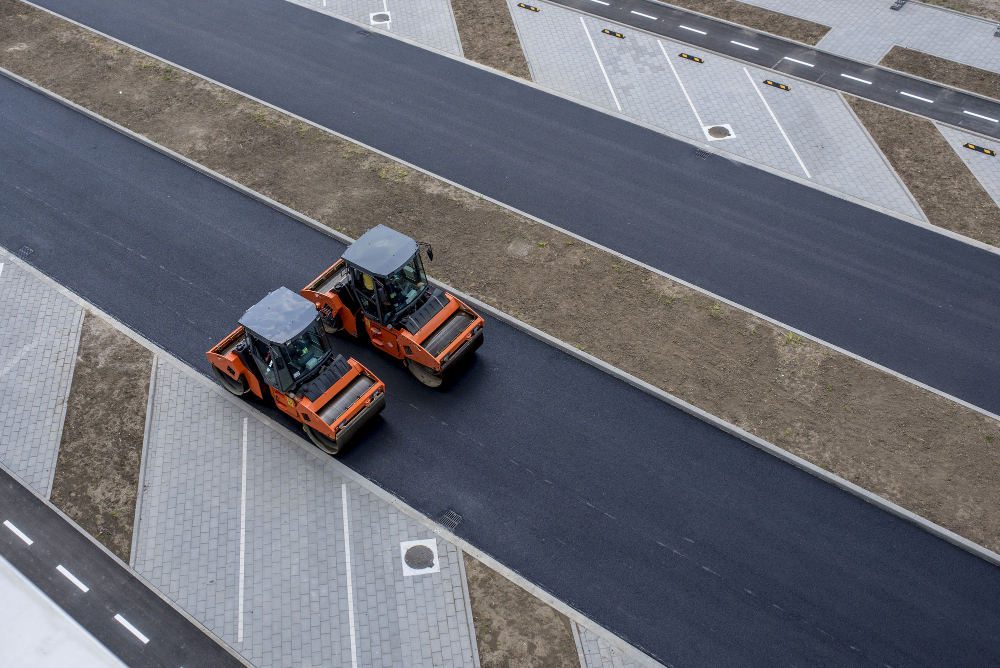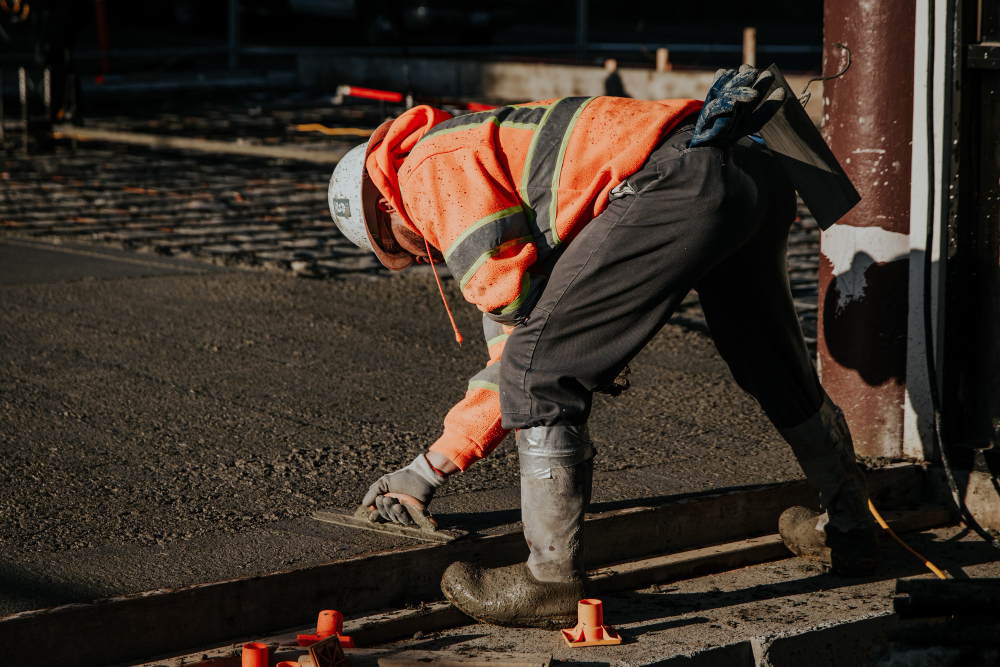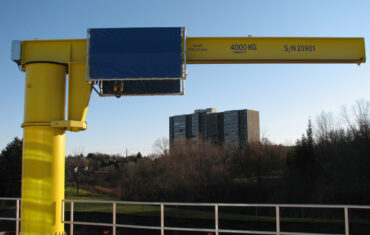Roadworks are essential to maintaining the quality of roads. Road work companies in the UK play an important part in the everyday lives of western society and the UK industry as a whole. Roads deteriorate over time for various reasons, such as lack of drainage, vegetation growth, settlement of materials underneath, and frost heave.
Roadwork involves various activities related to road construction, maintenance, reconstruction, and repair. These may include the laying down, widening, or resurfacing of roadways, sidewalks, or other related infrastructure.

Pavement
Road pavement (also referred to as road surface or surfacing) is the material covering the top of a roadway and designed to support heavy vehicular loads while providing a comfortable driving surface. Road pavements are essential components of highway systems and must be constructed using high-grade materials for optimal durability and climatic conditions, traffic load fluctuations, and weather variations. They are generally constructed layer by layer for optimal performance. A typical pavement system consists of three layers: the base course, the binder layer, and the surface course. The binder layer, typically composed of a hot bituminous mixture, must be strong enough to withstand shear stresses while being sufficiently dense enough to prevent rutting and fatigue cracking in unbound materials beneath. Finally, surface courses consist of coarse-textured materials like crushed stone, gravel, or asphalt as the outermost layers.
Road work companies lay tarmac pavements that come in either rigid or flexible forms. Rigid pavements feature concrete slabs over subgrade and granular bases, dispersing loads over an expansive area. Though more costly to construct, rigid pavements tend to last longer with lower maintenance costs compared to flexible ones and can even be created locally using local materials.
These materials may become contaminated with water and salt, which can damage pavement surfaces. To ensure quality standards are met, testing should take place to meet specific quality requirements such as Marshall stability, particle size distribution, and permeability tests, as well as having a minimum design life of 20 years.
Additionally, road surfaces should have a smooth and level surface to reduce skidding. Dustproof materials provide comfort at high speeds, while easy maintenance and repair make repairs faster, plus less noise pollution!
Additionally, pavement should be designed to withstand the load of vehicles by providing an even surface free from potholes that is stable. Regular maintenance, including surface dressing or slurry seals, may help as well. Finally, pavement should also be designed to improve stormwater drainage; this can be accomplished by providing sufficient slope or porous materials, as well as an adequate slope.
Subgrade
The subgrade of a road is the underlying soil that serves to support its pavement. As an essential component of its design, subgrade determines the load-bearing capacity of the structure. Therefore, its material should be strong yet durable, available near construction sites nearby, cost-effective, and readily available for quick deployment if any emergency construction happens on it. Otherwise, it can quickly deteriorate and shorten pavement life significantly.
Road subgrade is typically made of dirt or other natural material that has been compacted to form a stable base for pavement construction. To assess the strength and support capabilities of soil conditions, testing such as California bearing ratio (CBR) tests or plate load tests is often utilised.
Before beginning construction on a new road, it is imperative to prepare and level the subgrade. This process, known as subgrade preparation or reduction to level, aims at creating a uniform surface capable of resisting both traffic forces and environmental conditions; soft spots should also be eliminated and be reasonably parallel with the plane of construction.
Planning is of great significance in any road project and involves numerous activities, from site evaluation to creating detailed drawings and specifications. Contractors should ensure they have access to all the required equipment and materials during this stage.
Once the subgrade is prepared, an aggregate layer can be added on top to increase its bearing capacity. Usually, this process is conducted using a paver, which distributes asphalt mix evenly before compressing it with a roller before rolling up to add road crowning for proper drainage and minimise rutting.
To improve the performance of a subgrade, chemical stabilisers can be added to enhance its load-bearing properties and help prevent rutting while prolonging pavement life. Stabilisers come in various forms, such as lime and cement, and work by reacting with moisture in the soil to form gel-like masses that increase shear strength, resistance to permanent deformation, and reduced susceptibility to swelling.
Sidewalks

A sidewalk (North American English) or pavement (British English, Australia, New Zealand, Ireland, and India) is a path intended for pedestrian use along the side of roads that is designed for walking. Usually higher than the roadway and separated from it by a curb or curb, sidewalks are typically constructed of concrete but can also be constructed using other materials like pavers, brick, or stone to provide pedestrian safety and mobility as well as create an enjoyable walking environment.
Sidewalks are essential in urban areas to promote walkability and enrich community identity, reducing traffic congestion and air pollution. But not all sidewalks are created equal, and it is vital to design them correctly to meet accessibility standards. Generally speaking, sidewalks should feature a maximum cross-sloping of 2 percent with a clear width between obstructions of at least 0.9 metres (3 feet). Furthermore, major gaps that make navigation difficult should also be filled out prior to the construction of the sidewalks.
Apart from meeting accessibility requirements, sidewalk design should also take the context of the street into account when designing it. This includes considering the locations of pedestrian generators, such as hospitals, libraries, and sports arenas. In rural areas, alternative materials like wood might be suitable to better match the local landscape.
At any construction project on public right-of-way, it is vitally important to allocate sufficient room for future sidewalks. In some cases, this may involve acquiring additional right-of-way or narrowing the roadway in order to make room for them; either way, this must be done carefully so as not to compromise pedestrian needs.
The city is dedicated to making sidewalks safe for pedestrians and improving existing infrastructure. Part of its efforts involves identifying streets without sidewalks and assessing whether retrofitting them would be feasible; similarly, streets with one sidewalk force pedestrians to cross multiple times over to reach their destination;
Street lights
Street lights are an integral element of road design that increases pedestrian safety and visibility at night, improves traffic flows, and adds an attractive appearance to urban streets. Yet selecting lighting can be complex; different types of street lights each have their own benefits and drawbacks that must be taken into consideration before selecting one based on road function and traffic volume, as well as the lamp type’s impact on brightness, visibility, and height, as this determines overall road visibility.
Streetscapes can be defined by their nighttime illumination—both of the road itself as well as surrounding sidewalks and walkways. Proper street lighting serves to inform users while supporting the activities of pedestrians, bicyclists, and motorised travellers in public rights-of-way. Lighting improvements often result from community advocacy or involvement; although experts will make many decisions, citizens with a basic understanding can help choose suitable options for their neighbourhood.
Pedestrian lighting typically involves using smaller, more frequently spaced fixtures with lower total wattage and reduced potential glare, creating a safer pedestrian environment. This approach may prove particularly effective on wide streets with tall trees or other features that produce extra dark spots along sidewalks; additionally, such lighting could prove particularly helpful along streets that serve as school walking routes since most trips occur during darker hours.
Midblock street lighting offers safety advantages by making road alignment, kerbs, sidewalks, surface conditions, and crossing points visible to vehicular traffic at night. It is recommended for locations that feature numerous service roads or have high volumes of vehicular traffic.
State and local regulations stipulate that roadway lighting must be consistent with other elements of design, such as street furniture, signage, and landscaping, to form a coherent streetscape design. Failure to do so can result in disjointed and incomplete streetscape designs that do not work well together.






